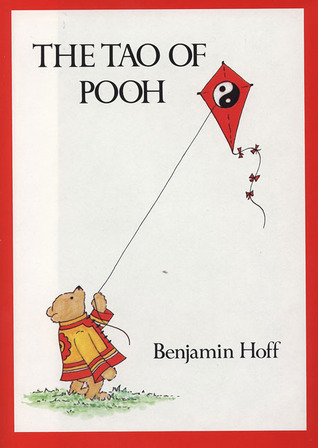Chapter 12: Pooh?
byPooh? In this chapter, the narrator and Pooh have an engaging and lighthearted conversation about Taoist philosophy, focusing specifically on the concept of P’u, or the Uncarved Block. The narrator explains that many people are unfamiliar with Taoism, leading to the idea of embarking on a whimsical journey to China to understand the philosophy better. In a quaint shop filled with allegorical scrolls, they come across a painting titled “The Vinegar Tasters,” which becomes a central point for the conversation. This painting features three renowned figures—Confucius, Buddha, and Lao-tse—each representing one of China’s three major teachings, and each tasting vinegar, which symbolizes the essence of life. The different reactions of these figures to the vinegar offer insight into how each philosophy views life’s complexities. The chapter introduces the contrast between Taoism and other philosophical views, using humor to explain deep concepts in an accessible way.
As they analyze the expressions of the figures in the painting, it becomes clear that Confucius, Buddha, and Lao-tse offer contrasting interpretations of life’s essence. Confucius is depicted with a sour expression, representing his belief that life is filled with disappointment due to the divide between the past and the present. He advocates for strict rituals and respect for ancestors, believing that social order and structure are necessary to maintain harmony. Buddha’s expression is bitter, signifying his view that life is inherently filled with suffering caused by human desires and attachments. He advocates for transcending this suffering through spiritual practices and attaining Nirvana, a state of liberation from worldly pain. These two figures reflect philosophical systems that focus on life’s difficulties, either through societal order or spiritual transcendence, highlighting the contrasting views of Confucianism and Buddhism.
Lao-tse, however, is portrayed with a gentle smile, symbolizing his Taoist perspective that life is harmonious when aligned with the Tao, or the natural way of the universe. Lao-tse believes that understanding life’s essence is not about imposing rules or intellectual analysis but by being in tune with the natural rhythms of existence. Taoism teaches that by yielding to the natural flow of life, one can experience peace and happiness. The smile of Lao-tse represents the idea that life, at its core, is neither bitter nor sour but inherently good and harmonious when approached with simplicity and spontaneity. This philosophy stands in sharp contrast to the more rigid perspectives of Confucius and Buddha, who focus on rules and transcendence, respectively. Taoism suggests that true wisdom and fulfillment come from embracing simplicity, not from complicating life with societal expectations or spiritual practices designed to escape reality.
When Pooh expresses confusion about the connection to vinegar, the narrator provides a clarifying explanation, particularly regarding Lao-tse’s smiling face despite the unpleasant taste of the vinegar. Through Taoist philosophy, the idea is introduced that negative experiences or perceptions can be transformed into positive ones by simply embracing life as it comes. Taoism teaches that life’s difficulties are not inherently bad; they simply need to be viewed with an open and accepting mindset. Pooh’s ability to approach situations with simplicity and a lack of pretense allows him to embody the essence of Taoism, finding joy and wisdom in the ordinary. In contrast to the more intellectual or complex perspectives of Confucius and Buddha, Pooh teaches that happiness comes from understanding life in its natural state—without the need to overcomplicate or resist it. This transformation of perspective, where life’s challenges become opportunities for growth and understanding, is central to Taoist thought.
As the chapter comes to a close, Pooh offers a simple suggestion to visit their friends and wish them a “Very Happy Thursday.” This seemingly mundane statement perfectly captures the Taoist principle of living in the present moment and finding joy in life’s simplicity. Pooh’s suggestion highlights the value of appreciating the little moments, underscoring that deep philosophical truths can be found in everyday experiences. The Taoist concept of being fully present and mindful is reflected in Pooh’s carefree nature, suggesting that profound wisdom does not always come from grand gestures but from the appreciation of life as it unfolds naturally. The chapter concludes with Pooh returning the conversation to a simple, relatable subject—food—reminding readers that the true essence of life can be found in the simplest of moments. This transition from high-level philosophy to everyday life is a key aspect of Taoism, showing that wisdom is not about intellectualization but about living authentically, in harmony with the world around us.

